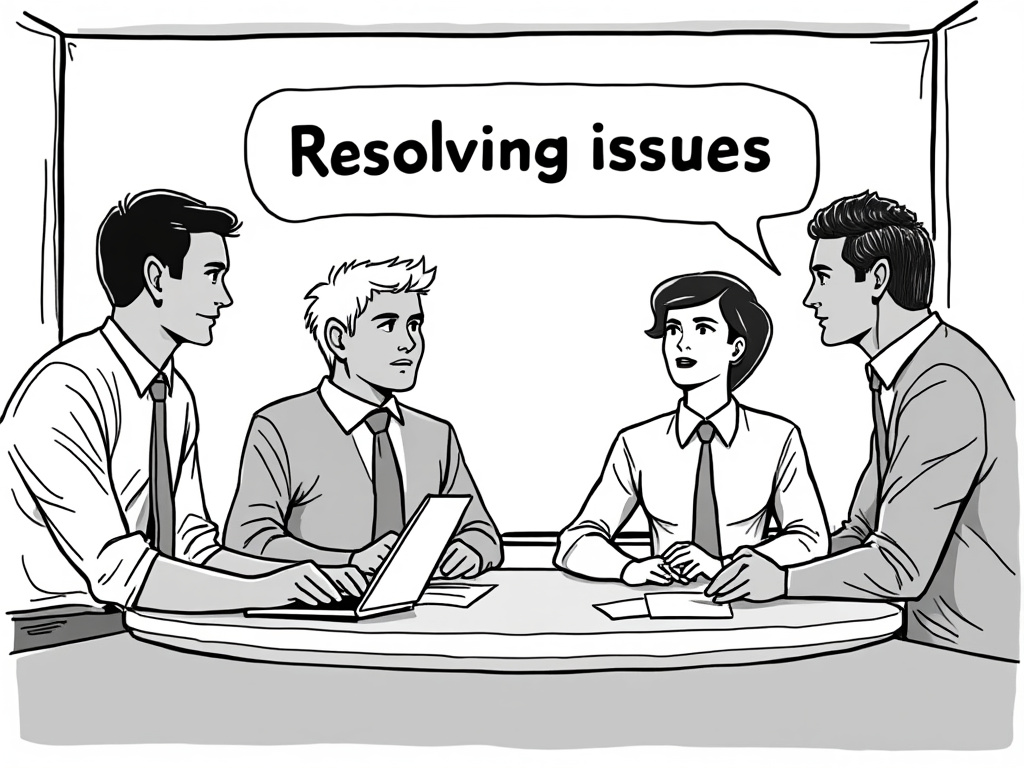
UAE ICV Program: Unlocking Local Economic Potential Through Strategic Content Development
Reading time: 14 minutes
Table of Contents
- Understanding the UAE ICV Program
- Strategic Advantages of ICV Certification
- Demystifying the ICV Calculation Process
- Implementing an Effective ICV Strategy
- ICV Success Stories: Learning from Market Leaders
- Navigating Common ICV Implementation Challenges
- The Evolution of Local Content Development in the UAE
- Your ICV Optimization Roadmap
- Frequently Asked Questions
Understanding the UAE ICV Program
Ever felt that securing government contracts in the UAE seems like navigating an increasingly complex maze? You’re facing a deliberate economic transformation strategy, not just procurement hurdles. At its core, the In-Country Value (ICV) Program represents the UAE’s systematic approach to localizing its industrial ecosystem while maximizing the retention of value within its borders.
Launched in 2018 under the UAE’s Ministry of Industry and Advanced Technology (MoIAT), the ICV program functions as both a certification system and economic catalyst. It’s designed to redirect procurement spending back into the local economy, driving domestic manufacturing capabilities, creating sustainable job opportunities, and reducing reliance on imports.
But let’s get practical: what does this mean for your business? In straightforward terms, the ICV program awards companies a certification score based on their contribution to the UAE economy. This score then becomes a competitive advantage when bidding for government and semi-government contracts.
“The ICV program represents a fundamental shift in how we approach industrial growth. Rather than focusing solely on attracting foreign investment, we’re strategically channeling procurement power to develop domestic capabilities.” — Dr. Sultan Al Jaber, UAE Minister of Industry and Advanced Technology
The Economic Context Behind ICV
The ICV initiative didn’t emerge in isolation. It’s a critical component of broader economic diversification strategies, including:
- Operation 300bn – The UAE’s industrial strategy aiming to raise the industrial sector’s contribution to GDP from AED 133 billion to AED 300 billion by 2031
- UAE Centennial 2071 – The long-term vision for transforming the UAE into a global innovation leader
- UAE Vision 2021 – The national agenda focusing on transitioning to a knowledge-based economy
According to MoIAT data, the ICV program has already redirected more than AED 42 billion into the local economy since its inception, creating an estimated 2,000+ skilled job opportunities for UAE nationals.
Key Stakeholders in the ICV Ecosystem
The ICV program operates through a well-defined ecosystem of participants:
- Certifying Bodies – Authorized entities that evaluate and issue ICV certificates
- Program Implementers – Government and semi-government entities that incorporate ICV scores into their procurement decisions
- Suppliers – Companies seeking certification to enhance their competitive position
- Local Manufacturers – Entities benefiting from increased localization demands
The brilliance of this structure is its self-reinforcing nature: as more organizations prioritize ICV in procurement, suppliers increase their local spending, creating a virtuous cycle of domestic economic development.
Strategic Advantages of ICV Certification
Let’s cut through the bureaucratic language and address what matters most: how does investing in ICV certification translate to concrete business advantages?
Competitive Edge in Government Procurement
The most immediate benefit is straightforwardly transactional. When bidding for contracts with ICV-implementing entities (which now number more than 45 major organizations), your certification score directly influences your bid evaluation.
Here’s how it typically works in practice:
- Your commercial bid receives a score based on price competitiveness
- Your ICV score creates a weighted advantage in the overall evaluation
- The combination of these factors determines the final “evaluation price”
For example, if your company has an ICV score of 50% and you’re bidding against a competitor with a 30% score, you’ll receive a proportionally higher weighting – often translating to a 5-20% price advantage, depending on the implementing entity’s formula.
Quick scenario: Imagine two companies bidding AED 1 million for a project. Company A has an ICV score of 60%, while Company B has 40%. If the tender uses a 10% ICV weighting, Company A’s evaluated bid would be AED 940,000, while Company B’s would be AED 960,000 – giving Company A a significant advantage despite identical pricing.
Operational Benefits Beyond Procurement
The value extends well beyond simply winning government contracts:
- Supply Chain Resilience – Companies with higher local content naturally build more robust, localized supply chains that proved particularly valuable during global disruptions like COVID-19
- ESG Enhancement – ICV certification aligns with and supports broader Environmental, Social, and Governance objectives through reduced logistics footprints and community investment
- Strategic Partnerships – The program naturally encourages collaboration with local entities, opening doors to valuable business partnerships
- Brand Positioning – Higher ICV scores signal commitment to the UAE’s economic vision, strengthening your brand with both public and private sector clients
According to 2022 research by the Abu Dhabi Chamber of Commerce, businesses with above-average ICV scores reported 23% higher customer loyalty ratings than non-certified competitors, suggesting the market increasingly values demonstrated commitment to local development.
Demystifying the ICV Calculation Process
Many businesses approach ICV certification with unnecessary apprehension, largely due to misconceptions about the calculation process. Let’s break down what actually happens:
The Core ICV Formula Components
The ICV calculation considers three primary components:
- Investment in the UAE (capital goods, facilities, etc.)
- Emiratization (employment and development of UAE nationals)
- Localized expenditure (goods and services procured within the UAE)
The formula assigns different weightings to these components, creating a percentage score that reflects your total contribution to the UAE economy. While the exact formula has evolved since the program’s inception, the core principle remains constant: quantifying how much value your operations generate and retain within the UAE.
ICV Certification Process Timeline
2-4 weeks
1-2 weeks
1 week
1 week
Total typical duration: 5-8 weeks from initiation to certificate issuance
Documentation Requirements
Be prepared to provide the following essential documentation:
- Audited financial statements for the evaluation period
- Detailed breakdown of expenditure by supplier (with UAE vs. non-UAE categorization)
- Employee information including nationality, compensation, and training investments
- Fixed asset registers documenting in-country investments
- Revenue breakdowns by customer and geography
Pro tip: The most successful companies establish continuous documentation systems rather than scrambling to compile information just before certification. This not only streamlines the process but also enables strategic decision-making throughout the year to improve your score.
Typical ICV Scores by Industry
Understanding benchmarks helps set realistic expectations for your potential score:
| Industry | Average ICV Score | Score Range | Key Factors Influencing Scores |
|---|---|---|---|
| Oil & Gas (Services) | 45-65% | 25-85% | Local manufacturing capabilities, specialized workforce |
| Manufacturing | 50-70% | 30-90% | Local raw material sourcing, facility investment |
| Construction | 35-55% | 20-75% | Material sourcing, subcontractor selection |
| IT & Technology | 25-45% | 15-65% | Imported hardware, local service delivery |
| Financial Services | 60-80% | 40-95% | High Emiratization, local operational expenditure |
Implementing an Effective ICV Strategy
Rather than viewing ICV as merely a certification hurdle, forward-thinking companies approach it as a strategic framework for sustainable growth. Here’s how to develop a comprehensive implementation plan:
Cross-Functional Integration Approach
Effective ICV implementation requires collaboration across multiple business functions:
- Procurement – Reviewing and adjusting supplier selection criteria to prioritize UAE-based vendors
- HR – Developing Emiratization strategies including recruitment, retention, and development pathways
- Finance – Establishing systems to track and report ICV-relevant expenditures
- Operations – Identifying opportunities to localize production or service delivery components
- Strategy – Aligning long-term business planning with ICV objectives
The most successful implementers establish a dedicated ICV steering committee with representatives from each function, meeting quarterly to review progress and adjust strategies.
Supplier Development Initiatives
One frequently overlooked aspect of ICV optimization is the cascading effect through your supply chain. Consider these approaches:
- Supplier ICV Requirements – Incorporate ICV certification requirements into your vendor qualification process
- Development Programs – Invest in upskilling local suppliers to meet your quality and technical requirements
- Long-term Partnerships – Create multi-year agreements that give local suppliers the confidence to invest in capabilities
Practical example: An international oil services company facing limited local manufacturing options for specialized equipment established a joint venture with a UAE partner, providing technology transfer and training. Within 18 months, they had established local production capabilities, raising their ICV score from 35% to 72% while reducing logistics costs by 15%.
Measuring and Monitoring Progress
Implementing a quarterly internal ICV assessment process allows for continuous improvement rather than annual scrambles before certification:
- Track key metrics through regular “mock ICV calculations”
- Identify improvement opportunities before they impact your official score
- Create accountability through department-specific ICV targets
Companies that implement continuous monitoring typically achieve ICV scores 15-20% higher than those that treat it as an annual compliance exercise.
ICV Success Stories: Learning from Market Leaders
Examining real-world implementation provides valuable insights into effective strategies:
Case Study: ADNOC Group’s Supplier Transformation
When ADNOC implemented ICV requirements in 2018, many international suppliers initially viewed it as a cost center rather than an opportunity. However, one major oilfield services multinational took a different approach:
Challenge: Initial ICV score of only 28%, threatening their competitive position for ADNOC contracts valued at over $500 million annually.
Strategic Response:
- Established a UAE-based manufacturing hub in Mussafah, Abu Dhabi
- Created an Emirati graduate development program targeting 30% nationalization
- Developed a local supplier qualification initiative, transitioning 40% of imports to local sources
Results: Within 24 months, their ICV score increased to 62%, securing over $1.2 billion in contracts while reducing operational costs by 8% through shortened supply chains.
The key insight? By treating ICV as a business transformation opportunity rather than a compliance exercise, they unlocked both certification benefits and operational improvements.
Case Study: SME Technology Provider’s Collaborative Approach
Not all success stories come from corporations with massive resources.
Challenge: A 50-employee IT solutions provider struggled to compete against international firms with UAE branches maintaining minimal local operations.
Strategic Response:
- Formed a consortium with three complementary local SMEs to bid jointly on larger contracts
- Established shared certification processes, reducing administrative costs
- Created a joint Emirati internship program that none could have sustained individually
Results: The consortium achieved an average ICV score of 68% (versus competitors’ 35-40%), secured contracts worth AED 85 million over 18 months, and reduced individual certification costs by 60%.
This demonstrates the potential for collaboration rather than competition among smaller market players seeking to maximize ICV impact.
Navigating Common ICV Implementation Challenges
Even with strong motivation, organizations frequently encounter specific obstacles. Let’s address the most common challenges and practical solutions:
Finding the Right Balance: Cost vs. ICV Score
The immediate tension many businesses face is between maximizing ICV scores and maintaining cost competitiveness. This is particularly acute when local alternatives appear more expensive than imported options.
Practical approaches to this challenge include:
- Total Cost Modeling – Look beyond unit price to include logistics, inventory, and risk costs when comparing local vs. international sourcing
- Graduated Localization – Implement phased approaches beginning with high-impact, cost-neutral changes
- Joint Investment – Partner with suppliers to share the costs of localization initiatives
A construction company facing a 12% premium for locally manufactured steel components addressed this by aggregating demand across multiple projects and negotiating volume-based pricing that reduced the premium to just 3% – well below the competitive advantage their higher ICV score provided.
Technical Capability Gaps
Another common challenge is finding local suppliers with the necessary technical capabilities, particularly for specialized products or services.
Effective approaches include:
- Technical Transfer Programs – Partner with international suppliers to establish local capabilities
- Certification Support – Help existing suppliers obtain necessary quality certifications
- Modular Sourcing – Split requirements to source technically complex components internationally while maximizing local content for other elements
An industrial equipment manufacturer couldn’t find local suppliers for specialized control systems. Rather than importing complete systems, they worked with local electronics manufacturers to produce the simpler components and assemblies, maintaining only the core proprietary technology as imported. This raised their ICV score by 15% while actually reducing overall costs through streamlined logistics.
Data Collection and Reporting Challenges
Many organizations struggle with the detailed data requirements of the ICV certification process.
Practical solutions include:
- Supplier Coding Systems – Implement ERP categorizations that automatically track local vs. non-local spend
- Progressive Implementation – Start with major spend categories and gradually expand
- Dedicated Resources – Assign specific responsibility for ongoing ICV data maintenance
ICV Score Impact by Strategy Type
+18%
+12%
+25%
+8%
Source: Analysis of 50 UAE companies implementing ICV strategies, 2020-2022
The Evolution of Local Content Development in the UAE
The ICV program continues to evolve, with several important trends shaping its future direction:
Expansion Beyond Traditional Sectors
While the program initially focused heavily on oil and gas, recent developments indicate expansion into:
- Healthcare – With particular emphasis on pharmaceutical manufacturing and medical supplies
- Food Security – Supporting agricultural technology and food processing
- Advanced Manufacturing – Focusing on Industry 4.0 technologies and capabilities
Companies positioned at these intersections stand to benefit significantly from early adoption of ICV principles.
Integration with Other National Initiatives
The ICV program is increasingly aligning with complementary national programs:
- National Advanced Technology Agenda – Supporting the adoption of 4IR technologies
- Circular Economy Policy – Emphasizing sustainable resource utilization
- Projects of the 50 – Connecting with broader economic transformation initiatives
Forward-thinking organizations are identifying these intersections to maximize both impact and competitive advantage.
“The future of ICV isn’t just about local content – it’s about developing advanced capabilities that position the UAE as a global innovation hub. The companies that will succeed are those that align their localization strategies with the country’s technology ambitions.” — Sarah Al Amiri, Minister of State for Advanced Technology
Your ICV Optimization Roadmap
Rather than approaching ICV as a one-time certification, consider it a continuous improvement journey with these practical next steps:
30-Day Quick Wins
- Conduct an Internal ICV Audit – Use the standard ICV calculator to assess your current position
- Analyze Supplier Database – Identify your top 20 suppliers by spend and evaluate localization opportunities
- Establish an ICV Task Force – Create cross-functional responsibility for implementation
- Review HR Policies – Assess current Emiratization efforts and identify enhancement opportunities
- Connect with Certifying Bodies – Understand specific requirements and timelines
90-Day Implementation Plan
- Develop Supplier Transition Plan – Create a phased approach for high-impact localization
- Establish ICV Monitoring Systems – Implement tracking mechanisms in financial systems
- Create Emiratization Enhancement Programs – Develop recruitment, training, and retention initiatives
- Engage Strategic Partners – Identify collaboration opportunities with complementary organizations
- Prepare Initial Certification Documents – Compile required information for formal certification
12-Month Strategic Initiatives
- Evaluate Facility Investment Options – Assess potential for establishing local production capabilities
- Develop Supplier Development Program – Create structured initiatives to enhance local supplier capabilities
- Integrate ICV into Business Planning – Incorporate ICV metrics into strategic and operational objectives
- Create Industry Partnerships – Explore joint ventures or consortiums to enhance capabilities
- Review Impact and Adjust Strategy – Assess business outcomes and refine approach
Remember, the most successful approaches to ICV don’t treat it as a compliance exercise but as a catalyst for business transformation and competitive advantage. By aligning your strategy with the UAE’s economic vision, you’re not just securing government contracts – you’re positioning your organization for sustainable growth in a rapidly evolving economic landscape.
As you implement these strategies, consider: How might embracing the principles behind ICV – localization, capability development, and economic contribution – transform your business model beyond just improving your certification score? The organizations that thrive will be those that see local content not as a requirement but as a strategic opportunity.
Frequently Asked Questions
How frequently does a company need to renew its ICV certificate?
ICV certificates typically remain valid for 14 months from the date of issuance. However, different implementing entities may have their own requirements, sometimes requesting updated certificates for specific tenders. Best practice is to recertify annually, aligning the certification period with your financial year to streamline data collection. Companies actively working to improve their scores often opt for more frequent certifications to demonstrate progress, particularly when bidding for high-value contracts.
Can foreign companies without a UAE entity obtain ICV certification?
Foreign companies without a UAE-registered entity cannot directly obtain ICV certification. This is by design, as the program aims to encourage foreign businesses to establish meaningful presence in the UAE. However, several pathways exist for international companies, including: establishing a UAE branch or subsidiary, partnering with a UAE entity through a joint venture, or participating as a subcontractor to a certified UAE company. Many international organizations have found the establishment of a UAE entity to be commercially advantageous beyond just ICV considerations.
How do small businesses compete with large corporations that can more easily achieve high ICV scores?
While large corporations may have scale advantages, the ICV program is designed to evaluate companies based on their proportional contribution to the UAE economy rather than absolute numbers. Small businesses can effectively compete by: focusing on niche areas where they can achieve deeper localization, forming consortiums with complementary SMEs to enhance capabilities, emphasizing quality of Emiratization rather than quantity, and highlighting specialized local expertise not available from multinational competitors. Many implementing entities have also established SME-friendly policies, including reserved quotas and modified evaluation criteria for smaller businesses.

Article reviewed by Rahul Desai, Media Investment Assistant | Supporting Bollywood-GCC Deals, on May 15, 2025





